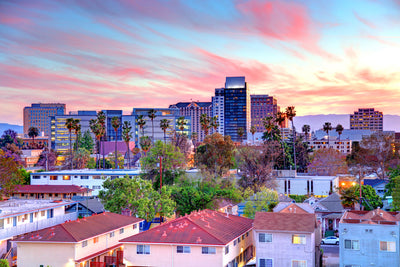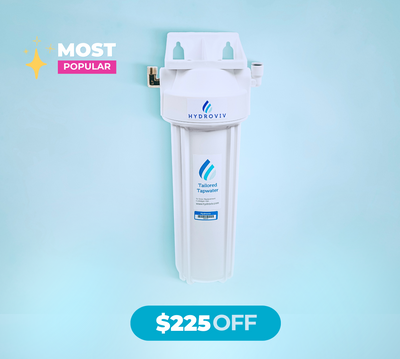Problems We Found In San José , California Drinking Water
RSS
Analies Dyjak, M.A. | Policy Nerd
**Updated July 2, 2021 to include most recent data
Hydroviv's science team has aggregated water quality test data from San José Water and the City of San José, the U.S. Environmental Protection Agency (EPA), the Environmental Working Group, and the US Geological Survey. The custom water filters that we build for our customers in the San José area are optimized with this research in mind. The San José Region is serviced by Two water systems: The San José Municipal Water System (Muni Water) serves the North San José, Alviso, Evergreen, Edenvale and Coyote Valley communities of the City of San José. San José Water serves San José, Campbell, Los Gatos, Monte Sereno, Saratoga, and parts of Cupertino.
Arsenic in San José’s Drinking Water
Arsenic is a naturally occurring hazardous heavy metal that can cause cancer and other health problems. 2020 Arsenic levels were reported to be as high as 4.2 ppb. While San José’s Arsenic levels were not in violation of EPA water quality standards, consumers should know that the U.S. EPA's standard balances toxicity against the costs of removing arsenic from drinking water. We strongly suggest that tap water with levels higher than 1 part per billion be treated to remove arsenic, especially in homes with children.
Lead In San José’s Drinking Water
Lead contamination in tap water is different from most pollutants, as lead comes from plumbing, not the water supply. 2020 lead sampling by the San José County Water Department detected levels reported as less than 5 parts per billion at the municipal level. However, this does not necessarily represent the lead levels at the tap. EPA, CDC and the American Academy of Pediatrics all recognize that there is no safe level of lead for children. In addition, Federal regulations cannot take into account levels measured at an individual tap.
PFAS in San José’s Drinking Water
Per and Polyfluoroalkyl Substances (PFAS) are a category of emerging contaminants commonly used in firefighting foam, Teflon, non-stick surfaces, stain-resistant surfaces, and food packaging. The Agency for Toxic Substances and Disease Registry (ATSDR) has determined that PFAS exposure is associated with various adverse health effects, including an increased risk of cancer, lowered fertility rates, and developmental issues in infants and young children.
The City of San José voluntarily tested the water for PFOS and PFHxS, and the levels were measured to be 8 ppt and 5.3 ppt, respectively. Not all water filters are designed to remove PFAS from tap water. If you'd like to find water filters that remove PFAS from tap water, check out this Duke/NC State PFAS study. Hydroviv filters are NSF/ANSI Standard 53 certified for PFOA/PFOS removal.
Disinfection Byproducts (DBPs) In San José’s Drinking Water
DBPs are a category of emerging contaminants that form when chlorine-based disinfectants react with naturally-occurring organic matter. EPA regulates two categories of DBPs: Total Trihalomethanes (TTHMs) and Haloacetic Acids (HAA5). The EPA has stated that DBPs have been associated with increased risk of bladder cancer as well as kidney, liver, and central nervous system problems. In 2020, Haloacetic Acid levels in San Jose were as high as 48 parts per billion, compared to the EPA Maximum Contaminant Level (MCL) of 60 parts per billion. Total Trihalomethane levels were reported to be as high as 61 parts per billion, compared to the MCL of 80 parts per billion.
Radium and Uranium in San José’s Drinking Water
Radium is a naturally occurring radioactive metal. Radium in drinking water is of primary concern because exposure through drinking water may cause cancer, kidney damage and birth defects. Radium levels in 2020 were reported to be as high as 2.6 ppb with the EPA Maximum Contaminant Level Goal 5 ppb. Uranium levels measured at 1.3 ppb in 2020, with the EPA Maximum Contaminant Level Goal set at 30 ppb.
Chromium 6 Levels In San José’s Drinking Water
Chromium 6 is a highly toxic metal that is not regulated by the EPA. According to testing conducted by the Environmental Working Group, San José Water had Chromium 6 levels as high as 4.5 parts per billion (4500 parts per trillion), which is up to 225 times the level generally accepted as safe. The California EPA has acknowledged that ingesting Chromium 6 through drinking water can increase the risk of stomach cancer and reproductive issues.
Use Of Chloramine In San José’s Tap Water
San José disinfects its tap water with chloramine, which is common alternative to chlorine. Chloramine is known to cause a "bad taste" in tap water, and unlike chlorine will not fade away if left in the fridge overnight. Most one-size-fits-all water filters are not designed to remove chloramine.
How Can Hydroviv Help Me?
Hydroviv is a water filtration company that uses water quality data to optimize water filters for each customer's water. The contaminants that we list above are what we consider to be major “points of emphasis” that we use to build water filters that are built specifically for San José water, but all of our filters also include broad protection against a wide range of contaminants. Questions? Email hello@hydroviv.com.
Hydroviv's drinking water filters carry NSF certifications to Standard 42 (aesthetic effects--Chlorine Removal) and Standard 53 (health effects--Lead, VOCs, and PFOA/PFOS removal), and are independently tested to remove hundreds of contaminants.
Recommended Articles For You:
Everything You Need To Know About PFAS Contamination in Tap Water
Disinfection Byproducts In Your Drinking Water
Tap Water Disinfection: What's The Difference Between Chlorine and Chloramine?


